Hydroponics and aquaponics are trending in the gardening world, and there are good reasons why.
These two forms of gardening can increase your harvest and make you happy.
However, many people are using the two terms interchangeably.
Are they the same? If not, what distinguishes one from the other? Read this article to find out.
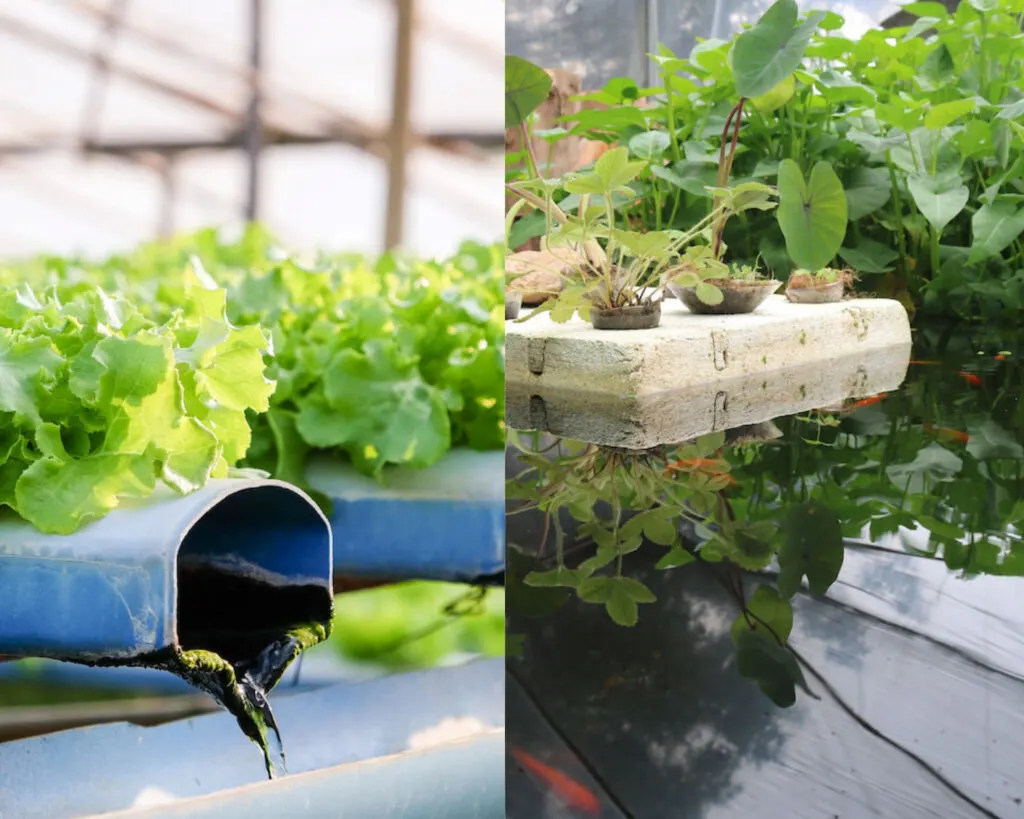
Table of Contents
Differences Between Hydroponics and Aquaponics
The two concepts are not the same.
Both refer to planting in a soilless medium, especially in nutrient-rich water.
However, in aquaponics, you combine planting and aquaculture.
This means that in aquaponics, you grow your plants using the nutrients in water containing living fish.
However, for hydroponics, you can use any type of water (so long as it is nutritious).
Aquaponics is a type of hydroponics.
Some distinguishable features of both concepts are:
1. System Design and Components
One significant difference between hydroponics and aquaponics is the design of their systems.
In aquaponics, you will need a larger water tank so that your fish can grow big.
While you can use aerators and water pumps in both systems, you do not need them in some hydroponics systems. Also, the shapes of both systems are different.
- In a hydroponics system, you can keep your plants anywhere, as you only need to supply nutrients from the reservoir to their roots.
- However, for aquaponics, your plants need a grow medium that can house microbes. These microbes convert fish waste into readily available nutrients for your plants.
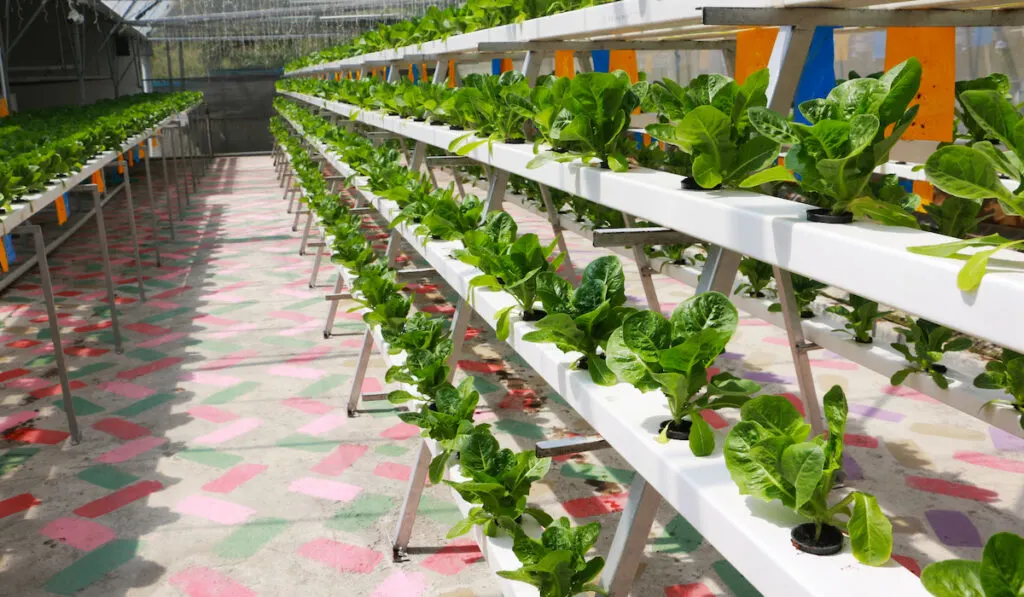
2. Source of Nutrients and Supplements
This is the major difference between the two types of gardening.
In hydroponics, your plants get nutrients from a nutrient-rich solution in the reservoir. This solution is mostly a mixture of water and chemical nutrients.
However, in aquaponics, your plants get nutrients from spent fish water. When fish produce waste in the water, microbes help to break down this waste so that your plants can get nutrients to grow.
However, fish waste may not be enough to satisfy the growth of your plants.
For example, fish waste might lack potassium and iron. This means that you will most likely give your aquaponics plants some nutrient supplements.
Hydroponics plants already have everything that they need in their fertilizer so long as you feed them with hydroponic fertilizers.
3. Cost of Setting Up
The difference in the cost of setting up hydroponics and aquaponics systems will help you to decide which one to set up.
An aquaponic system is significantly more expensive to set up than a hydroponic one.
You will buy everything you need for hydroponics plus lots more if you want to grow plants with aquaponics. You will also need fish fingerlings and feed for your aquaponics fish.
You can grow hydroponics plants using basic systems made from materials in your home. However, you need pumps and aerators to set up a basic aquaponics system.
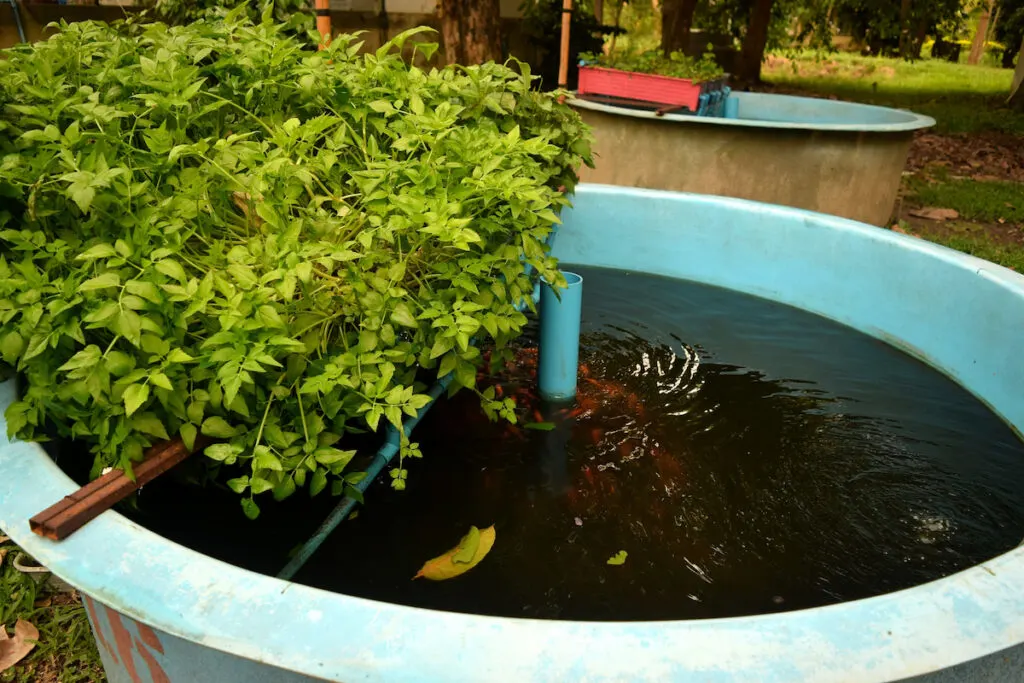
4. Start-Up Speed
If you want to get started with either hydroponics or aquaponics, you can start planting in the hydroponics system the same day you set it up.
As for aquaponics, you will wait for an extra seven to ten days after setting up your system before you can start planting.
The reason is simple: Aquaponics systems work when you have enough microbes in your plants’ grow media to break down and convert the waste from your fish.
Without these microbes, your plants will not get nutrients even if the fish tank is filled with waste.
Some people buy nitrifying bacteria to speed up the waiting time, but it is still good practice to wait for a week at least.
Waiting a week will help the pH and other physicochemical parameters of the water to stop fluctuating before you add the plants.
5. Cost-Effectiveness
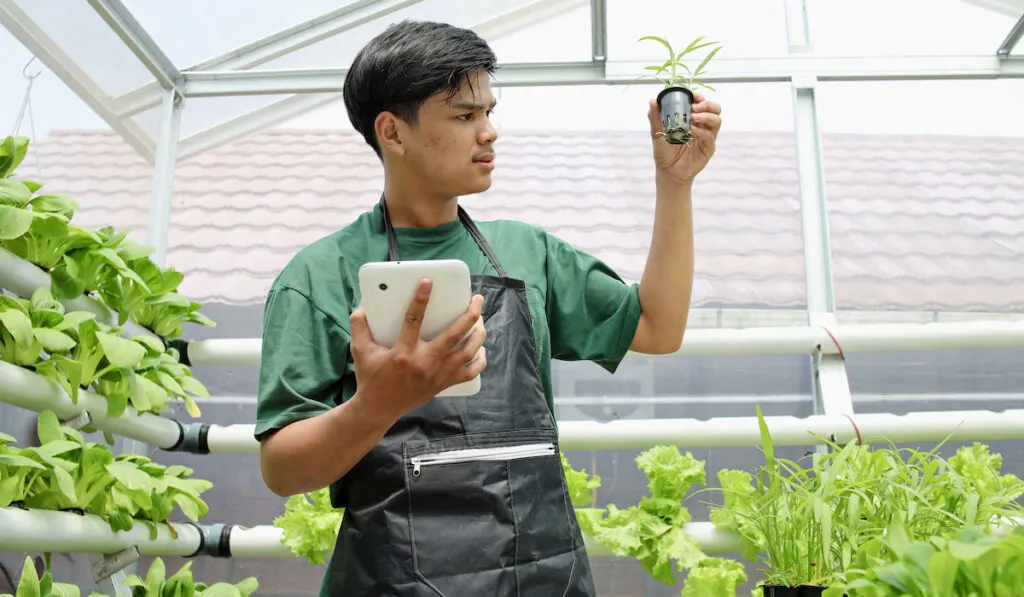
In the long run, how cost-effective are hydroponics and aquaponics?
You will save and get more money when you set up an aquaponics system.
In hydroponics, you will buy hydroponics fertilizers regularly; sometimes, weekly. However, you will buy only supplements (which are significantly cheaper than fertilizers) in aquaponics.
The major operational cost for aquaponics is the cost of buying fish feed.
At the end of the harvest, you have used the cost of fish feed (and some nutrient supplements) to get both fishes and plants that you can sell or eat.
You can also look for alternative feed for your fish to reduce the cost. For example, you can feed the fish with insect larvae.
However, for hydroponic plants, you need the readily available nutrients in hydroponic fertilizers.
6. Harvest
As you already know, you will get both fish and plant products when you set up an aquaponics system.
However, you will get only plant products when you grow your plants using hydroponics.
If you want to harvest more than plants, set up an aquaponics system.
7. Gardening Activities
Hydroponics and aquaponics are similar, but when gardening starts actively, your operations in aquaponics will be slightly different from your operations in hydroponics.
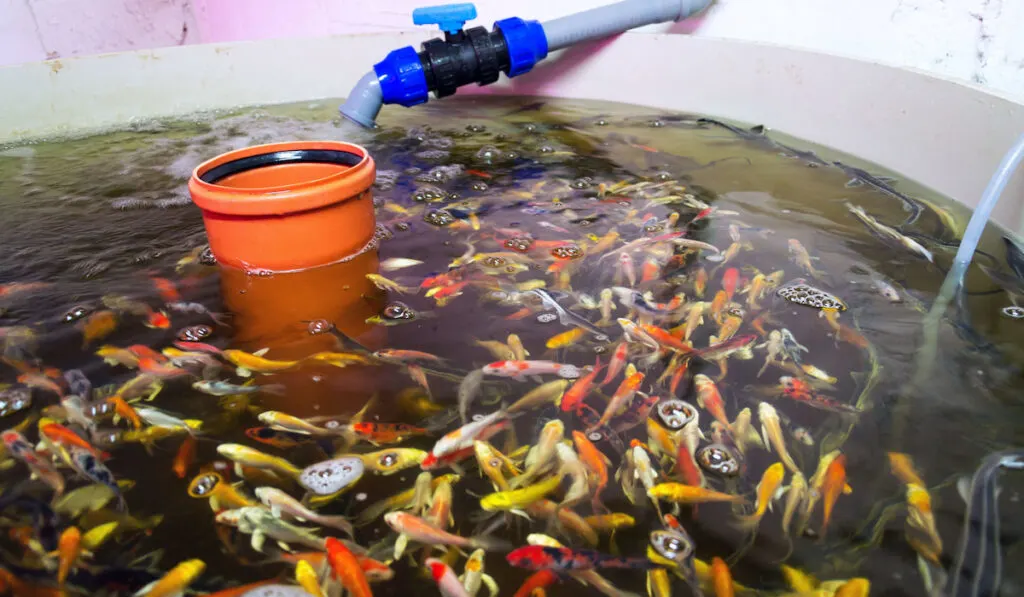
Here are some things that you will do when you have an aquaponics or hydroponics system:
- Hydroponics: After feeding your plants, you will check the atmospheric conditions. You will also check the water temperature and pH.
- Aquaponics: You feed the fish instead of the plants. You will check everything listed for hydroponics plus lots more (described below).
To know how quickly the microbes convert nutrients for your plants, you will check the water ammonia and nitrate levels every seven to ten days.
The nitrate levels will tell you if you need more fish in the water or more plants in the system.
While you will mostly focus on your plants in hydroponics, you will have to attend to both the plants and fish in aquaponics.
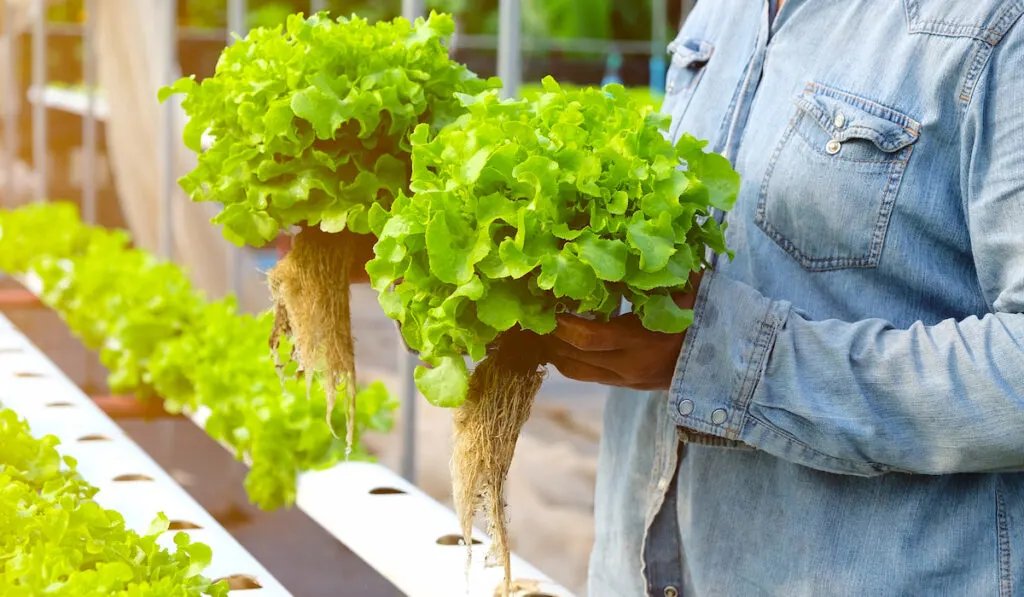
Similarities Between Hydroponics and Aquaponics
Now you understand their differences. However, aquaponics is still a type of hydroponics. This means that they have a lot of similarities. Here are some:
1. Soilless Gardening
In both systems, you are not using soil and are directly applying nutrients to the plant’s roots through the water.
Both systems make use of nutrient-rich water to supply nutrients to your plants.
This means that you need a water reservoir for both systems.
The reservoir is a fish tank for aquaponics but is filled with chemical nutrients for hydroponics.
You will also make use of pumps and aerators in both systems. However, there are some basic types of hydroponics systems that you can construct without using these electrical devices.
2. Possible Plants to Grow
If you can grow a plant with hydroponics, you can grow it with aquaponics as well.
Also, you cannot grow a plant in your aquaponics system if you can’t grow it in your hydroponics system.
Here are four types of plants that you can grow in both hydroponics and aquaponics:
- Leafy greens
- Fruit vegetables
- Flowers
- Herbs
So long as a plant is not woody or heavy and you are not so interested in its roots (such as potatoes and yams), you can grow it in your hydroponics or aquaponics system.

3. Healthier Plants
One major reason why farmers grow their plants with hydroponics or aquaponics is so that they can grow healthy plants.
These two types of gardening promote healthier plants, as your plants get a steady supply of nutrients and oxygen-rich water.
In your hydroponics or aquaponics system, your plants do not need to compete for nutrients, as nutrients are readily available.
You will most likely see that your plants have broader and greener leaves if you grow them using hydroponics or aquaponics.
Pest attacks are also almost eliminated, if your hydroponics and aquaponics systems are indoors.
Growing the plants indoors also means that you can control the temperature and humidity to match the exact needs of your plants.
4. Environmental Impacts
Another major reason why farmers are moving to hydroponics or aquaponics is that these types of gardening can mitigate harmful environmental impacts of soil growing.
You can go green when you plant in your soilless garden.
When you plant in a regular garden, you have to fertilize your plants. This process can make aquifers a bit toxic if the nutrients leach into the groundwater or if it flows to a river, making the river too nutritious for the plants and fishes in it.
As you can see, aquaponics and hydroponics eliminate the chance of nutrients (from your garden) polluting our aquifers and rivers.
Awesome, right?
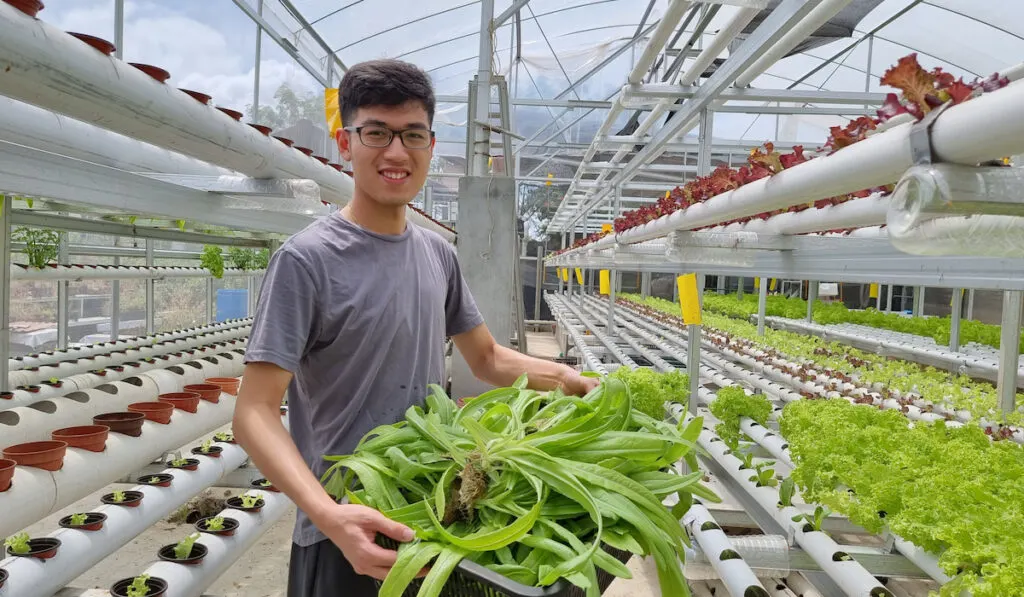
5. Growing Season
You do not need to think about the growing season of your plants when you are growing them using hydroponics or aquaponics. This is because you can control the atmospheric conditions indoors.
This means that it does not matter where you live or what time of the year it is; you can grow any type of plant from anywhere in the world so long as the plant is suitable for hydroponics.
If you are growing warm-season plants, keep the temperature warm. If you are growing cool-season plants, keep the temperature cool.
However, watch the water’s temperature if you have fish in it.
If you want to grow cold-loving plants, raise cold-loving fish in your aquaponics tanks.
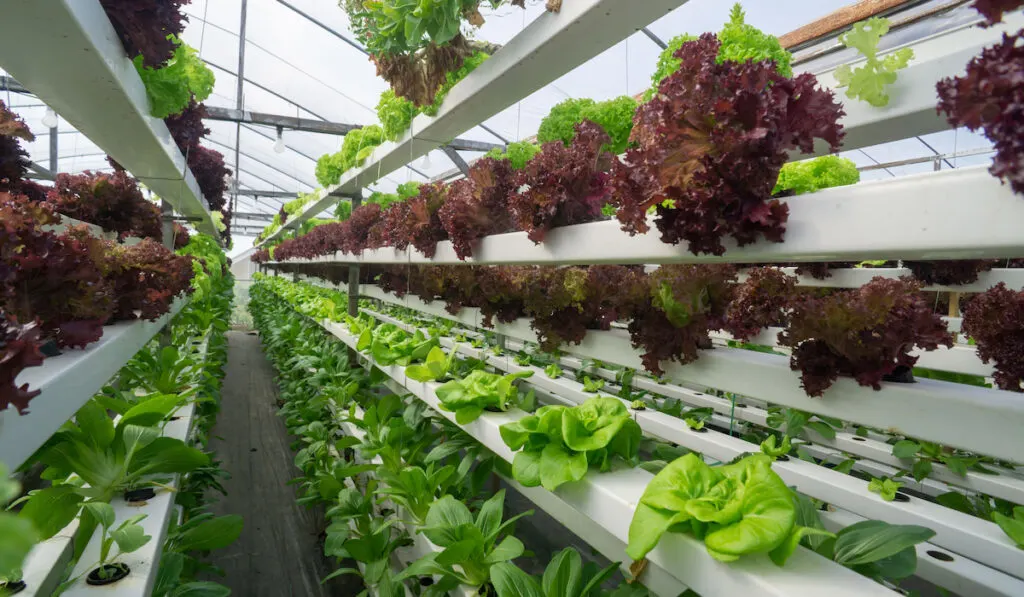
Which Is Best for You?
You can definitely practice either hydroponics or aquaponics. However, consider the following before you make your choice:
- Space: Aquaponics systems need more space, as fish need large tanks to grow. If you have limited space, start with hydroponics.
- Cost: Aquaponics is more expensive to set up. However, you do not need to buy fertilizer when you grow your plants with spent fish water.
- Attention: In hydroponics, you just need to check the atmospheric and water conditions. However, aquaponics needs more attention, as you will also feed your fish and check their health.
- Yield: At the end of the harvest, you’ll get both plant products and fish when you set up an aquaponics system. However, you will get only plant products from hydroponics.
You can practice either hydroponics or aquaponics. However, try starting with hydroponics to understand the concept better before setting up your aquaponics systems.
Conclusion
Truly, both hydroponics and aquaponics are cool forms of gardening. Try to set up a system if you can.
However, make use of their differences and similarities to decide the best one for you. Remember to be attentive to your plants (and fish).
Resources
- https://www.trees.com/gardening-and-landscaping/hydroponics-vs-aquaponics
- https://sensorex.com/2020/03/24/aquaponics-vs-hydroponics/amp/
- https://gogreenaquaponics.com/blogs/news/hydroponics-with-fish-and-aquaponics
- https://www.edengreen.com/blog-collection/hydroponics-aquaponics-aquaculture-difference
